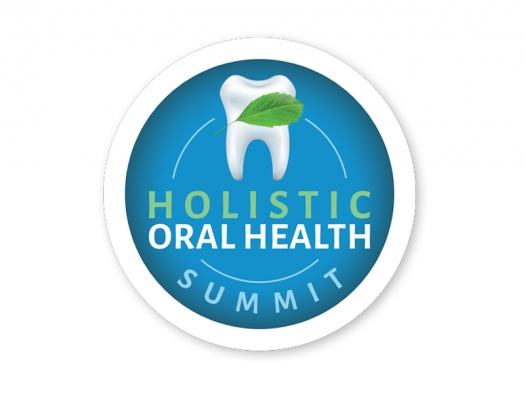HolisticOralHealthSummitLogo.jpg

Holistic Oral Health Summit
The Holistic Oral Health Summit included interviews by Jonathan Landsman with all of the following professionals:
- Mike Adams, Editor, NaturalNews: Conventional Dentistry: A Risk to Society
- Blanche D. Grube, DDS: Is It Wise to Keep Your Wisdom Teeth?
- Robert Kleinwaks, DC: Cancer Success Story: My Path to Healing
- Oksana Sawiak, DDS, IMD, MAGD: Toxins and Bugs: The Dangers Lurking in the Mouth
- Gary Larsen, DDS: Dental Implant News: Warning and Solutions
- Stuart Nunnally, DDS, MS: Cavitation Dangers: How to Heal Properly
- Thomas E. Levy, MD, JD: Solutions for Heart Disease and Oral Infections
- Christopher Hussar, DDS, DO: Is Your Mouth Killing You?
- Robert Kulacz, DDS: Medical Alert: Root Canal Procedures
- John Rothchild, DDS: The Truth About Gum Disease
- Robyn Openshaw: Natural Solutions for Toxic Dental Procedures
- Dr. Thomas Janossy: Removing Toxins with Chelation Therapy
- Lane Freeman, DDS: Gum Disease: Signs, Symptoms and Solutions
- Veronique Desaulniers, DC: Breast Cancer: What You Need to Know
- David Minkoff, MD: Dangerous Dentistry: A Medical Perspective
- Tom O’Bryan, DC, CCN, DACBN: Digestive Solutions: The Oral Health-Gut Connection
- Chris Shade, PhD: Mercury Poisoning: Signs, Tests and a Detox Plan
- Boyd Haley, PhD: Mercury Exposure: An Alzheimer’s Disease Alert
- Leonard T. Fazio, DDS: Mercury Amalgam Silver Fillings: A Guide to Safe Removal
- Ty Bollinger: Your Cancer Risk EXPOSED
- Eric Zielinski, DC: Essential Oils for Oral Health
- David Kennedy, DDS: Suppressed Dental Crimes and Natural Remedies
- Griffin Cole, DDS, NMD: How to Pick the Best Dentist for Your Health
- Robert Scott Bell: Natural Remedies for Oral Health
- Mark McClure, DDS, FAGD: Integrative Medical Dentistry: Treating the Neuro-immune System
- Marjory Wildcraft: 7 Questions to Ask Your Dentist
- Tammy Kohlschmidt, RDH, CTT, CBP: Your Mouth and Body: Creating Healthy Chemistry and Energy
- Bruce Fife, ND: Oil Pulling Therapy: A Natural Way to Kill Infections
- Lowell B. Weiner, DDS, FAGD: Why Am I Still Sick: Overlooked Solutions Revealed
- Thomas Lokensgard, DDS, NMD: How to Stay Healthy in a Chronically-inflamed World
- Nadine Artemis: Holistic Dental Care: Your Guide to Healthy Teeth and Gums
- Phil Mollica, DDS: Integrative Biological Dentistry: A Non-toxic Approach
- Dawn Ewing, PhD: Are Your Teeth Making You Sick?
- Ronald Hunninghake, MD: Vitamin C Therapy: Neutralizing Dental Toxins
- Leo Cashman: Health Alert: Avoiding the Dangers of Dentistry
A summary from the interviews follows.
Bacteria in the mouth and impact on health
- Fibromyalgia, fatigue, osteoporosis, kidney disease, heart disease, Alzheimer’s, and arthritis can all be triggered by bad bacteria in the mouth. This is a well-established fact confirmed by 100’s of studies.
- 90% of the population have bacterial overgrowth in their mouth.
- Infected teeth can lead to breast cancer and heart disease, as well as systemic body wide inflammation as in elevated CRP.
- The same bad bacteria in the mouth has been found in atherosclerotic plaque causing heart disease.
- Areas of the jaw can be infected with no apparent pain.
- The American College of Cardiology looked at people with fatal heart attacks through PCR testing. There was a 75% match between bacteria found in the root canals in their mouths and bacteria found in the fatal blood clot causing the heart attack. Some say 90% of heart attacks are triggered by bad bacteria in root canals.
Root canals
- Root canals are generally done when the pulp of the tooth gets infected. The decay is removed, the canal is disinfected, sterilized and sealed. It is impossible to completely sterilize the tooth.
- In a healthy tooth blood flows through the pulp chamber and through the dentin tubules keeping the tooth flushed.
- When a root canal is done there is no blood flow to flush out the tooth.
- The dentin tubules which usually circulate nutrients and waste now simply harbor bad bacteria from the gum and jaw.
- Bacteria can also migrate into the dentin tubules through the enamel in the reverse direction continuing to push bacteria into a non-circulating tooth. This bacteria can no longer be flushed out due to no blood flow.
- A root canal tooth harbors this bad bacteria in the tubules, the pulp and the jaw. Exotoxins are made inside the tooth and migrate all over the body causing many diseases including coronary artery disease, kidney disease, breast cancer, arthritis, and aneurysm to name a few.
- Correctly extracting a root canal tooth is important. Do not use epinephrine in the anesthetic as this restricts bleeding; remove with as little trauma as possible; never use a lever against the other teeth; lay the gum back and section the tooth; take cultures of the bacteria at the base of the tooth and bone; remove the bone surrounding the tooth socket and let it bleed freely; use oral or IV antibiotics.
- If a root canal is recommended investigate all other options and opt out on the root canal for the sake of your health.
Amalgam fillings
- Amalgams have a high level of mercury and affect the body chemically and energetically.
- Do not get amalgams placed in your mouth but rather opt for composite fillings.
- If you already have amalgams in your mouth get them removed and replaced with composite fillings making sure you use a dentist who is trained in safe removal.
- Dentists who have studied safe removal can be found at the IAOMT.org website.
- When removing amalgam fillings do it properly with a rubber dam, amalgam meter, good ventilation, and a serum compatibility test for replacement dental materials. This is called the Clifford Reactivity Test and can be ordered by your dentist.
- Do a full body detox before and after the removal of the amalgams to avoid added toxic burden during the removal process. Chelation may be helpful.
Cavitation
- Cavitation is infection in the jaw bone where a tooth used to be but has since been removed.
- The hole in the jaw bone harbors infection, often with no pain.
- The hole has poor blood supply and circulation along with dead tissue adding to the problem.
- Cavitation is diagnosed using a Cone Beam Scan. Common x-rays often do not show cavitation.
- If a tooth extraction had a dry socket the likelihood of a cavitation increases.
- Cavitation risk increases with a root canal, gum disease and chronic low grade infection.
- Treatment: Surgically debride with a laser and ozone; irrigate with ozone water; pack the site with the patient’s platelets; use IV vitamin C; use acupuncture and acupressure.
Gum disease
- Gum disease or gingivitis (inflammation of the gums) can lead to periodontal disease.
- Causes include genetics, environment, diet, clenching of the teeth, and improper brushing and flossing.
- Signs include bleeding gums, bad taste in the mouth, bad breath and loose teeth.
- Bacteria is shared by spouses, children and pets.
- Biofilm is a sticky bacteria made up of parasites, virus, bacteria waste and bacteria. It is hard to penetrate and forms 24-48 hours after a cleaning. Proper brushing, flossing, and hydro flossing help disrupt the biofilm from reforming.
- Bad bacteria which causes gum disease can be observed using a microscope.
- Treatment: clean away the biofilm; do deep scaling; use a laser and ozone water irrigation; use trays of ozone gel.
The Dental Meridian Chart
- Each tooth relates to specific a Chinese meridian and ultimately to an organ or body part.
- When a health issue pertains to an organ look at the meridian for that organ and the tooth on that meridian.
- The Dental Meridian Chart outlines each tooth and what organ it affects.
- This can be beneficial if the patient suffers from breast cancer or other diseases as often a tooth (root canal) or other infection is involved.
Pulling teeth
- When wisdom teeth are pulled it is necessary to scrape out the soft tissue and scrub the area with betadine and antibiotic.
- Do not mix epinephrine in the anesthetic as this decreases the bleeding during and after extraction. It is important that the area bleed freely to disinfect and promote healing.
Oil pulling
- Oil pulling is a good preventative measure. It is curative and a systemic purifier. Once a day in the morning swish 2 tsp of coconut oil in the mouth for 8-20 minutes. You can add essential oils such as clove, orange, bergamot, peppermint, or frankincense to the oil. Spit out the oil into a receptacle so the sink does not clog.
- Oil pulling is important as the bacteria in the mouth migrates throughout the body.
- It is so effective that some people will show signs of detoxifying. It is important to keep all the elimination organs working such as the colon, kidney, lung and skin.
- Benefits: improved oral health, whiter teeth, fresher breath, reduced infections, tighter gum junctions, reduced plaque and reduced gum disease.
Healthy mouth microbiome
- Remove the biofilm harboring bacteria, virus, and parasites.
- Stop using chemicals in the mouth; avoid blood sugar spikes; stop mouth breathing; heal leaky gut by avoiding gluten, corn and phytic acid found in unsoaked nuts and grains; avoid glyphosate found in Roundup; remove mercury amalgams; remove pesticides and antibiotics.
- Repopulate the mouth with healthy bacteria with diverse flora including pre and probiotics.
- Restore the epithelium of the gum with ozone gel, essential oils, alkalizing rinses of baking soda, oil pulling, and probiotic swishes.
- After scaling or teeth cleaning swish with probiotics. These can be injected with a blunt syringe along the gum line.
- Make your own tooth paste using: 1/3 cup bentonite clay; ¼ cup hot water; ¼ tsp pink salt; 1 tbs coconut oil; 20-30 drops of essential oil.
- Make your own mouth wash using: 2 cups water and 10-20 drops of essential oils. Conventional mouth wash can be toxic especially if it contains chlorhexidine or corsodyl.
- Essential Oils: a) Can be used as mouthwash to reduce plaque, gingival inflammation, and teething in children (instead of Orajel use clove oil diluted with coconut oil); b) Lavender and Melissa have an anti-biofilm effect; c) Clove is good for gingivitis, bleeding gums, canker sores, and sensitive teeth; d) Lavender is also good for canker sores and blood blisters.
Testing and practices you may not think of
- Cone Beam Scans rule out cavitation and other infections that x-rays often miss.
- Dental material compatibility testing is important to determine what dental materials will be tolerated by your body. This is done by Clifford Reactivity Test which can be ordered by your dentist.
- Microscope analysis shows you firsthand what bacteria are lurking in your mouth. Find a dental practice that uses a microscope. Test for a baseline, treat and then retest.
- Ozone is very beneficial in combating bad bacteria in the mouth.
- Deleterious dental procedures can affect posture. Diet can encourage bad bacteria. Lack of exercise, sleep issues including sleep apnea and other life style issues can affect dental health. Look for a practitioner who will look at the whole body and not just the mouth.
Dos and Don’ts
- Don’t use toothpaste with fluoride or sodium laurel sulfate (SLS) as these products are toxic.
- Don’t use commercial mouthwash.
- Don’t use other cosmetics with toxins that are absorbed through the skin.
- Don’t eat the typical American diet high in carbohydrates, trans fats, and sugar.
- Don’t get amalgam fillings.
- Don’t get root canals.
- Do have adequate magnesium, phosphorus, K2 and Vit D3 in your diet.
- Do use a non-toxic toothpaste and mouth wash.
- Do use essential oils in your dental practices at home.
- Do use ozone gel to help control bad bacteria.
- Do use oil pulling.
- Do use a hydro flush or water pik to control plaque and encourage a healthy microbiome.
- Do get a Clifford Reactivity test before putting new dental materials in your mouth.
- Do use a zirconium implant instead of titanium if implants are chosen.
- Do get a Cone Beam Scan if cavitation are suspected.
- Do carefully interview and choose a respected biological and holistic dentist.
What to ask when looking for a biological holistic dentist
- Are they mercury free?
- What certifications do they have?
- Are they holistic and biological?
- What other degrees do they have such as a Naturopathic Doctor degree (ND)?
- Do they avoid fluoride?
- Do they help the patient demineralize their teeth through diet?
- What alternatives to root canals do they offer?
- Do they use a microscope to analyze mouth bacteria?
- Do they use ozone in their practice?
- Do they use a sandblaster instead of a drill?
- Do they have a Cone Beam Scanner?
- Do they use thermography?



